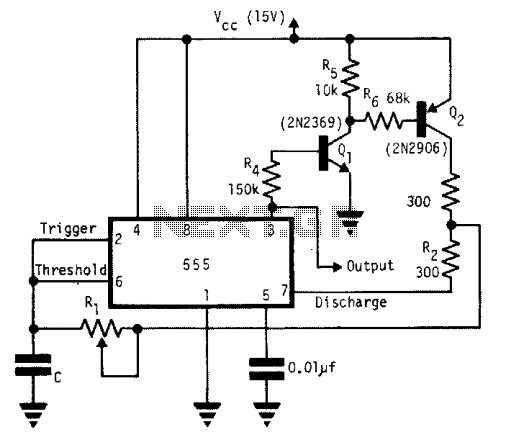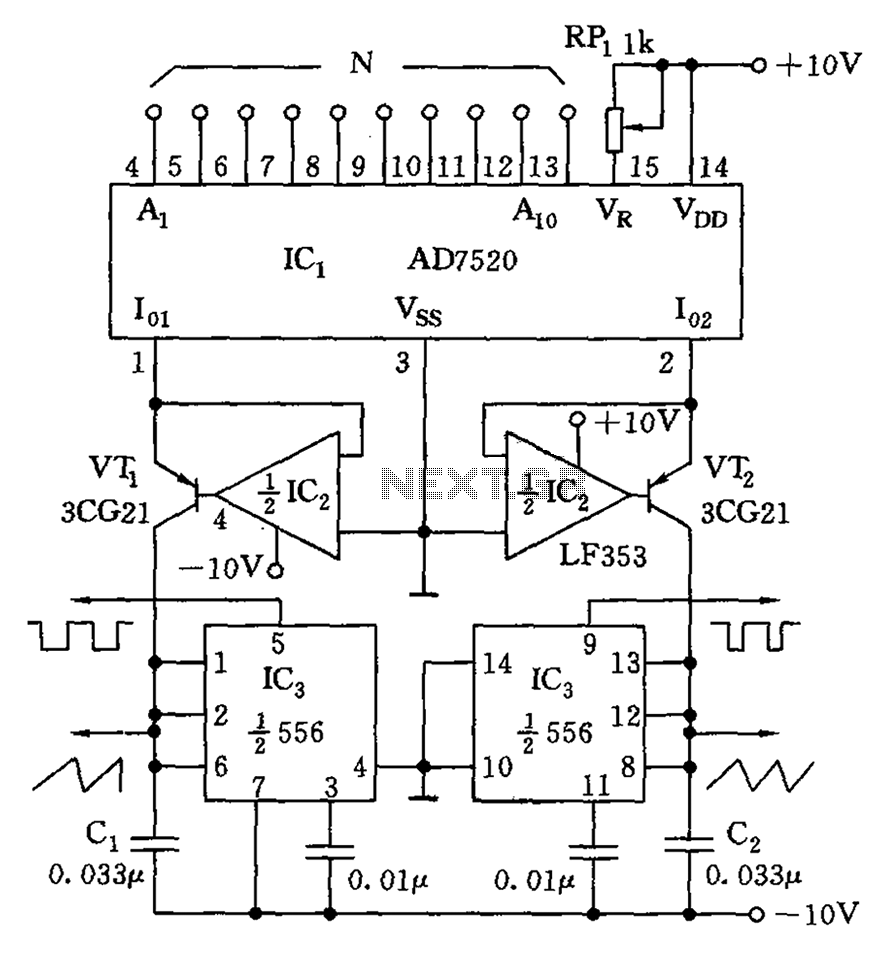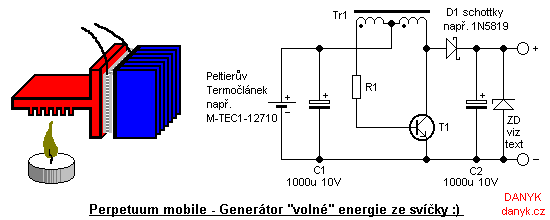
Square-wave generator with 555

A single timing resistor ensures that the output is a square (50% duty cycle) wave at all frequency settings. Any 555 type of chip will do the job.
The circuit utilizes a 555 timer IC configured in astable mode to generate a continuous square wave output with a 50% duty cycle across various frequency settings. The 555 timer is a versatile integrated circuit that can be used for timing applications, pulse generation, and oscillator functions.
In this configuration, the timing resistor plays a crucial role in determining the frequency of oscillation. The output frequency (f) can be calculated using the formula:
\[ f = \frac{1.44}{(R1 + 2R2) \times C} \]
where R1 is the timing resistor, R2 is a second resistor that can be adjusted for frequency variation, and C is the timing capacitor connected to the discharge pin of the 555 timer. For a 50% duty cycle output, R1 and R2 should be chosen such that their values are equal, or R2 should be set to zero, effectively creating a symmetric waveform.
The circuit typically includes a capacitor connected between the threshold and discharge pins and ground, which charges and discharges through the timing resistors, thus generating the square wave. The output pin of the 555 timer provides a square wave signal that can be used to drive other circuits or as a clock signal for digital applications.
To ensure stability and reliability, decoupling capacitors may be added close to the power supply pins of the 555 timer. This configuration allows for easy adjustments of frequency by varying the values of the resistors or the capacitor, making it suitable for a range of applications from simple timers to more complex pulse modulation systems.A single timing resistor ensures that the output is a square (50% duty cycle) wave at all frequency settings. any 555 type of chip will do the job.
The circuit utilizes a 555 timer IC configured in astable mode to generate a continuous square wave output with a 50% duty cycle across various frequency settings. The 555 timer is a versatile integrated circuit that can be used for timing applications, pulse generation, and oscillator functions.
In this configuration, the timing resistor plays a crucial role in determining the frequency of oscillation. The output frequency (f) can be calculated using the formula:
\[ f = \frac{1.44}{(R1 + 2R2) \times C} \]
where R1 is the timing resistor, R2 is a second resistor that can be adjusted for frequency variation, and C is the timing capacitor connected to the discharge pin of the 555 timer. For a 50% duty cycle output, R1 and R2 should be chosen such that their values are equal, or R2 should be set to zero, effectively creating a symmetric waveform.
The circuit typically includes a capacitor connected between the threshold and discharge pins and ground, which charges and discharges through the timing resistors, thus generating the square wave. The output pin of the 555 timer provides a square wave signal that can be used to drive other circuits or as a clock signal for digital applications.
To ensure stability and reliability, decoupling capacitors may be added close to the power supply pins of the 555 timer. This configuration allows for easy adjustments of frequency by varying the values of the resistors or the capacitor, making it suitable for a range of applications from simple timers to more complex pulse modulation systems.A single timing resistor ensures that the output is a square (50% duty cycle) wave at all frequency settings. any 555 type of chip will do the job.





